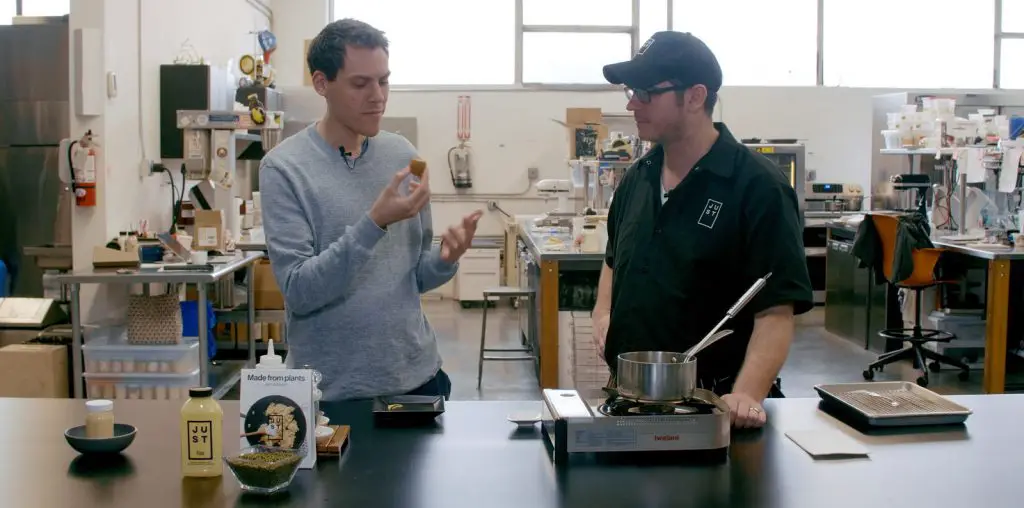
The casual moviegoer and the die-hard/name-dropping/pretension puking cinephile share one slender piece of common ground: a disdain for film technology. Not the inside secrets on how spaceships fly and monsters prowl, but rather the nuts and bolts of the actual technological tools used to photograph films, record the sounds to illustrate the films, and project the films on the big screen. Even the film industry is less than excited by this subject: the Academy Awards honoring special technological achievements, including the supposedly prestigious Gordon Sawyer Award, are held separate and apart from the annual celebrity T&A pageant and receive scant mention during the course of that glitzy ceremony.
Yet films have always been totally reliant on technology for their creation and distribution, and one man has created a solo effort in charting and celebrating the various breakthroughs and boo-boos which punctuated the tech-evolution of films. Martin Hart, through his web site The American WideScreen Museum, has established the most comprehensive and user-friendly guide to the story of the tech side of film production and distribution. Working from his home in the suburbs of Houston, Texas, Hart’s online museum is a must-see for anyone who has ever been hypnotized by the images flashing on a theater screen…and even briefly wondered how those images got there in the first place.
A non-commercial site, The American WideScreen Museum is divided into four wings. First is the history of wide screen systems, which traces an almost endless series of attempts to stretch and stretch the film screen to ridiculous proportions. Next is the history of color in films, which goes back to the nickelodeon days and runs through the heyday of Technicolor and its various small-time challengers (Cinecolor, Kinemacolor). Sound development is the subject of the next wing, offering rare reproductions of news coverage on the shaky introduction of voices to celluloid plus unique celebrations of the pioneers and processes which took silence out of filmmaking. The final wing is a Classic Poster Gallery, which allows the visitor to download free digital reproductions of the finest advertising campaigns devised for promoting wide screen movies.
Strangely, The American WideScreen Museum began as a way to repudiate incorrect data from a single unreliable scholar. “The inspiration was primarily the continual ridiculous historical ‘facts’ that were being published by one particular man,” says Hart, who graciously declined to identify the character in question. “He’d gotten the reputation of being some kind of guru on the history of wide screen stuff, having co-authored a book on the subject, and being the technical editor of a video magazine that dealt with wide screen films. I would read this guy’s material and just get furious. I finally had to quit buying the magazine because I’d become ill at the thought that this guy was passing out so much pure invention to the unknowing readership.”
Hart never experienced serious illness from the magazine in question, but in 1996 a far more acute threat to his well-being came from an automobile accident that damaged some of his vertebræ and, in his word, “did quite a number on my brain.” Hart, who had a 30-year career in technical sales in the commercial refrigeration and air conditioning industry, used the time in his recovery from the accident to set the record straight on not only the history of wide screen films, but also the development of sound and color–which were essential components when wide screen films took over the industry in the 1950s to combat the threat from the small-screen, black-and-white television.
Hart’s fascination with the wide screen began in 1959. “I first saw ‘Ben-Hur’ when I was in my early teens and I was so impressed with the image, color, and sound that I began to read everything I could on the subject,” he recalls. “When I decided to create a web site devoted to the subject, I dug out all the stuff I’d squirreled away and spent the next 18 months assembling the web site. The name The American WideScreen Museum seemed logical right from the start.”
Hart began The American WideScreen Museum by focusing first on the introduction of color to films. Admittedly, his efforts in documenting this subject matched the shaky early attempts of adding various hues to celluloid. “In a newsgroup discussion the topic of some of the early processes came up and I scanned some old photos and stuck them in a miscellaneous binaries newsgroup so that people could go there to download them,” says Hart. “But many complained that they couldn’t find them or that their server was cleaning out the newsgroups too fast.”
Good fortune and improved web techniques came to Hart in the person of a Finnish cinephile and webmaster named Jan-Eric Nyström, who e-mailed Hart from Helsinki with an offer to put the old color photos on his site. “I took him up on his offer but decided that I would learn to write HTML and make up the pages for those photos myself,” adds Hart. “Back at that time I was dealing with some real problems with the brain injury and I found I could write HTML easier using Windows Notepad than I could if I tried to figure out how to use dedicated HTML authoring software. Those first pages were kind of clunky but they looked pretty good and Jan-Eric would fix up whatever was incompatible with Netscape or Unix systems. Jan-Eric carried the Early Color stuff on his site for about a year and a half.”
Hart eventually taught himself the intricacies of web design and took over the full curating duties of his online museum. As the site is a labor of love, Hart is refreshingly not obsessed on trying to build the next Yahoo! in terms of web traffic. “Since the web site is not in any way a commercial venture, I really don’t monitor the amount of traffic it gets,” he says. “The last time I did any checking, the site was getting about 15,000 to 20,000 hits per year. That’s next to nothing–a popular porn site will get that many hits in an hour. One piece of information that my server folks did give me, and which stuck in my mind, was that the average visit to a typical web site lasts for barely a minute and then the reader is dashing off to another site. From their records, my server folks told me that the average visit to the WideScreen Museum site was nearly an hour and a half. That means more to me than the wham-bam-thank-you-ma’am hits. It reassures me that I’m putting something out there that people are interested in!”
Hart adds that at least one-third of his audience comes from outside of the United States and he has received contributions from European and Australian sources. It would also seem his audience is highly literate and deeply impressed, as he enjoys and “an appreciable amount of mail.”
So how much time goes into maintaining The American WideScreen Museum? “Waaaaay more than is justified,” jokes Hart. “Tracking down material isn’t all that time intensive. But converting it to something useful on a web site can be tremendously time consuming. Since I don’t have one of those nine-to-five lifestyles that normal people have, and, for the moment, I’m not married, I can spend ridiculous amounts of time on a project. When I’ve got something new that requires substantial time, I may put in ten to fifteen hours a day until it’s uploaded. A piece that I added to the sound section about nine months ago required over two months of intensive work to assemble. One thing that requires additional time is that I like to recreate the appearance of the original publication, not just throw all the text onto a white page. I’m also anal about the images that I make for the site. A small logo might require two or three hours to get to the point that it looks good and is still a small enough file that people don’t have to sit for an hour to download. That might be why people are willing to spend as much time on the site as they do, they aren’t waiting ungodly amounts of time for each page to load. The pages certainly do take time, but I’ve got about 1,700 graphics on the site and even though each one has been subjected to as much optimization for the web as possible, lots of pictures still mean there’s a wait, but there’s lots of stuff to read while you wait.”
While providing a great deal of time and energy in offering a history of wide screen films, Hart actually believes that bigger screens did not result in better films and, with few exceptions, most wide screen productions never took full advantage of the expanded dimensions in screen length and width.
“Emphatically NO, wide screens and color and stereophonic sound did not result in better films,” states Hart. “They have no bearing on whether a film is good or bad. Movies like ‘The Best Years of Our Lives’ or ‘To Kill a Mockingbird’ are some of the greatest achievements of the film industry, and they were black and white, conventional films. But wide screen and color and stereo gave us greater possibilities for certain types of movies. Certainly the epics benefitted. ‘Ben-Hur’ and ‘Lawrence of Arabia’ were genuinely enhanced by the technology available to the producers. But then there’s crap like ‘Song of Norway,’ ‘The Big Fisherman’ and ‘Krakatoa, East of Java’ that should have just been chopped up into a bunch of 70mm banjo picks. ‘Quo Vadis,’ one of my favorite non-wide screen epics and a monument to three strip Technicolor, could have benefitted from the wide screen technology that came in a scant two years after its release. On the other hand, I won’t even consider that anything would improve ‘Gone With The Wind.'”
Click here to read part two of LIVING ON THE WIDESCREEN which includes more amazing widescreen poster art.

